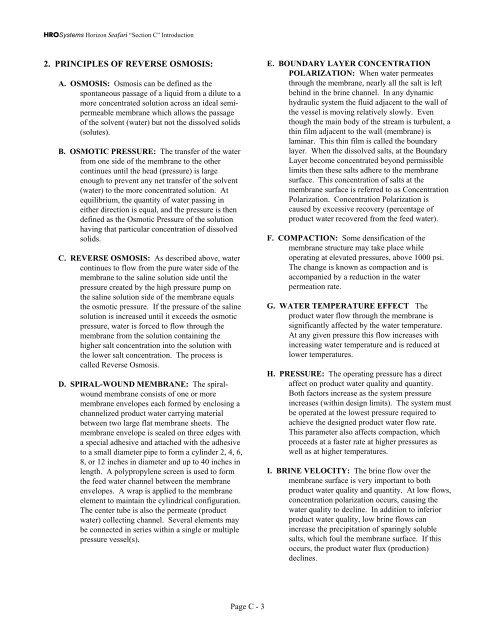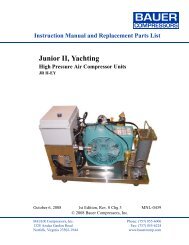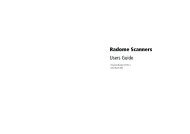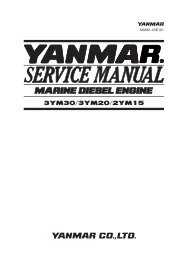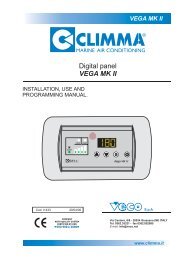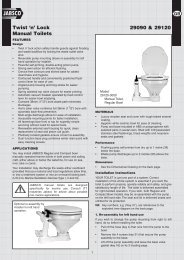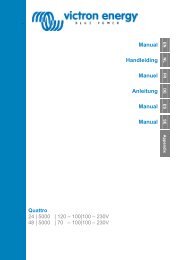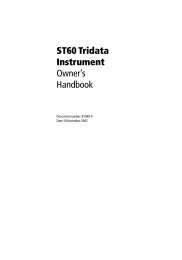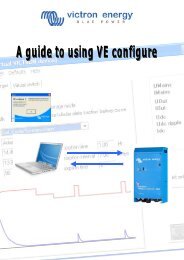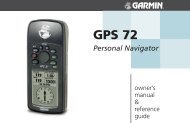Horizon Seafari Model 450-1800 Owner's Manual - Zanshin
Horizon Seafari Model 450-1800 Owner's Manual - Zanshin
Horizon Seafari Model 450-1800 Owner's Manual - Zanshin
You also want an ePaper? Increase the reach of your titles
YUMPU automatically turns print PDFs into web optimized ePapers that Google loves.
HROSystems <strong>Horizon</strong> <strong>Seafari</strong> “Section C” Introduction<br />
2. PRINCIPLES OF REVERSE OSMOSIS:<br />
A. OSMOSIS: Osmosis can be defined as the<br />
spontaneous passage of a liquid from a dilute to a<br />
more concentrated solution across an ideal semipermeable<br />
membrane which allows the passage<br />
of the solvent (water) but not the dissolved solids<br />
(solutes).<br />
B. OSMOTIC PRESSURE: The transfer of the water<br />
from one side of the membrane to the other<br />
continues until the head (pressure) is large<br />
enough to prevent any net transfer of the solvent<br />
(water) to the more concentrated solution. At<br />
equilibrium, the quantity of water passing in<br />
either direction is equal, and the pressure is then<br />
defined as the Osmotic Pressure of the solution<br />
having that particular concentration of dissolved<br />
solids.<br />
C. REVERSE OSMOSIS: As described above, water<br />
continues to flow from the pure water side of the<br />
membrane to the saline solution side until the<br />
pressure created by the high pressure pump on<br />
the saline solution side of the membrane equals<br />
the osmotic pressure. If the pressure of the saline<br />
solution is increased until it exceeds the osmotic<br />
pressure, water is forced to flow through the<br />
membrane from the solution containing the<br />
higher salt concentration into the solution with<br />
the lower salt concentration. The process is<br />
called Reverse Osmosis.<br />
D. SPIRAL-WOUND MEMBRANE: The spiralwound<br />
membrane consists of one or more<br />
membrane envelopes each formed by enclosing a<br />
channelized product water carrying material<br />
between two large flat membrane sheets. The<br />
membrane envelope is sealed on three edges with<br />
a special adhesive and attached with the adhesive<br />
to a small diameter pipe to form a cylinder 2, 4, 6,<br />
8, or 12 inches in diameter and up to 40 inches in<br />
length. A polypropylene screen is used to form<br />
the feed water channel between the membrane<br />
envelopes. A wrap is applied to the membrane<br />
element to maintain the cylindrical configuration.<br />
The center tube is also the permeate (product<br />
water) collecting channel. Several elements may<br />
be connected in series within a single or multiple<br />
pressure vessel(s).<br />
E. BOUNDARY LAYER CONCENTRATION<br />
POLARIZATION: When water permeates<br />
through the membrane, nearly all the salt is left<br />
behind in the brine channel. In any dynamic<br />
hydraulic system the fluid adjacent to the wall of<br />
the vessel is moving relatively slowly. Even<br />
though the main body of the stream is turbulent, a<br />
thin film adjacent to the wall (membrane) is<br />
laminar. This thin film is called the boundary<br />
layer. When the dissolved salts, at the Boundary<br />
Layer become concentrated beyond permissible<br />
limits then these salts adhere to the membrane<br />
surface. This concentration of salts at the<br />
membrane surface is referred to as Concentration<br />
Polarization. Concentration Polarization is<br />
caused by excessive recovery (percentage of<br />
product water recovered from the feed water).<br />
F. COMPACTION: Some densification of the<br />
membrane structure may take place while<br />
operating at elevated pressures, above 1000 psi.<br />
The change is known as compaction and is<br />
accompanied by a reduction in the water<br />
permeation rate.<br />
G. WATER TEMPERATURE EFFECT The<br />
product water flow through the membrane is<br />
significantly affected by the water temperature.<br />
At any given pressure this flow increases with<br />
increasing water temperature and is reduced at<br />
lower temperatures.<br />
H. PRESSURE: The operating pressure has a direct<br />
affect on product water quality and quantity.<br />
Both factors increase as the system pressure<br />
increases (within design limits). The system must<br />
be operated at the lowest pressure required to<br />
achieve the designed product water flow rate.<br />
This parameter also affects compaction, which<br />
proceeds at a faster rate at higher pressures as<br />
well as at higher temperatures.<br />
I. BRINE VELOCITY: The brine flow over the<br />
membrane surface is very important to both<br />
product water quality and quantity. At low flows,<br />
concentration polarization occurs, causing the<br />
water quality to decline. In addition to inferior<br />
product water quality, low brine flows can<br />
increase the precipitation of sparingly soluble<br />
salts, which foul the membrane surface. If this<br />
occurs, the product water flux (production)<br />
declines.<br />
Page C - 3


